Figures & data
Table 1. Concentrate composition and nutrient levels of the basal diet (air-dried basis), %.
Table 2. Bioactive substance composition and content of the residues used in groups II, III and IV.
Table 3. Effects of fermented Chinese herb residues on the growth performance of Simmental beef cattle during the fattening period.
Table 4. Effects of fermented Chinese herb residues on nutrient apparent digestibility of Simmental beef cattle during the fattening period (%).
Table 5. Effects of fermented Chinese herb residues on serum biochemical indices of Simmental beef cattle during the fattening period.
Figure 1. Effects of fermented Chinese herb residues on serum antioxidant indices of Simmental beef cattle during the fattening period.T-AOC, total antioxidant capacity; SOD, superoxide dismutase;MDA, malondialdehyde; GSH, glutathione.The groups were as follows: I: basal diet; II: diet prepared by replacing 10% corn husk with Chinese medicinal residue; III: diet prepared by replacing 10% corn husk with enzyme-fermented Chinese medicinal residue; IV: diet prepared by replacing 10% corn husk with enzymatic bacteria co-fermented Chinese herb residue.
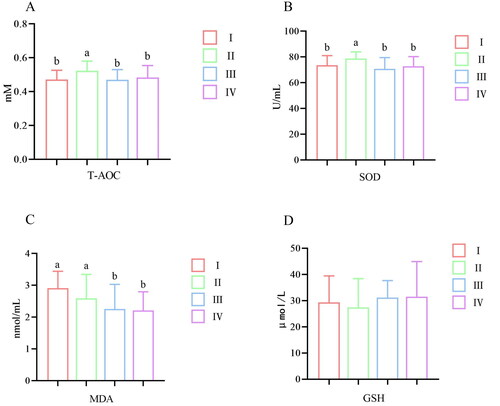
Figure 2. Effects of fermented Chinese herb residues on serum immune indices of Simmental beef cattle during the fattening period.IgA, immunoglobulin A; IgG, immunoglobulin G; IgM, immunoglobulin M.The groups were as follows: I: basal diet; II: diet prepared by replacing 10% corn husk with Chinese medicinal residue; III: diet prepared by replacing 10% corn husk with enzyme-fermented Chinese medicinal residue; IV: diet prepared by replacing 10% corn husk with enzymatic bacteria co-fermented Chinese herb residue.

Figure 3. OTU Venn diagram of intestinal flora in 4 groups of beef cattle.The groups were as follows: I: basal diet; II: diet prepared by replacing 10% corn husk with Chinese medicinal residue; III: diet prepared by replacing 10% corn husk with enzyme-fermented Chinese medicinal residue; IV: diet prepared by replacing 10% corn husk with enzymatic bacteria co-fermented Chinese herb residue.
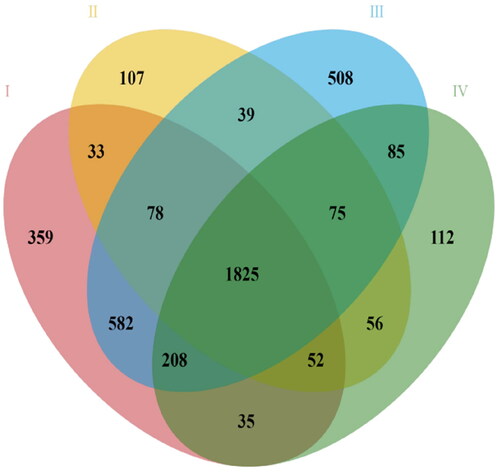
Figure 4. Comparisons of the α diversity indices of beef gut microbiota among the four groups.The groups were as follows: I: basal diet; II: diet prepared by replacing 10% corn husk with Chinese medicinal residue; III: diet prepared by replacing 10% corn husk with enzyme-fermented Chinese medicinal residue; IV: diet prepared by replacing 10% corn husk with enzymatic bacteria co-fermented Chinese herb residue.
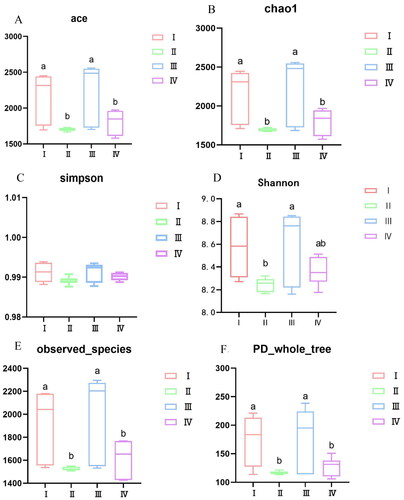
Figure 5. Differences in intestinal microbial β diversity between groups of Simmental beef cattle during the fattening period based on unweighted UniFrac (A) and weighted UniFrac (B).The groups were as follows: I: basal diet; II: diet prepared by replacing 10% corn husk with Chinese medicinal residue; III: diet prepared by replacing 10% corn husk with enzyme-fermented Chinese medicinal residue; IV: diet prepared by replacing 10% corn husk with enzymatic bacteria co-fermented Chinese herb residue.
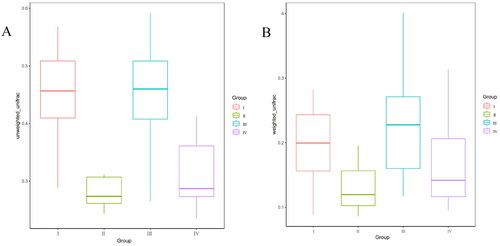
Figure 6. Principal coordinates analysis (PCoA) of intestinal microbiota in Simmental beef cattle during the fattening period based on unweighted UniFrac (A) and weighted UniFrac (B).the groups were as follows: I: basal diet; II: diet prepared by replacing 10% corn husk with Chinese medicinal residue; III: diet prepared by replacing 10% corn husk with enzyme-fermented Chinese medicinal residue; IV: diet prepared by replacing 10% corn husk with enzymatic bacteria co-fermented Chinese herb residue.
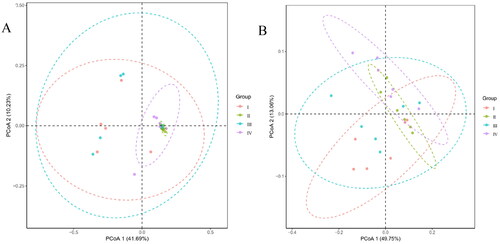
Table 6. Intestinal microbiome composition at the phylum level among the four groups of Simmental beef cattle (%).
Table 7. Intestinal microbiome composition at the genus level among the four groups of Simmental beef cattle %.
Figure 7. Bar chart of the relative abundance of intestinal microbial functional categories of Simmental beef cattle in each group. KEGG (A) and COG (B).The groups were as follows: I: basal diet; II: diet prepared by replacing 10% corn husk with Chinese medicinal residue; III: diet prepared by replacing 10% corn husk with enzyme-fermented Chinese medicinal residue; IV: diet prepared by replacing 10% corn husk with enzymatic bacteria co-fermented Chinese herb residue.

Data availability statement
The data that support the findings of this study are openly available in NCBI, reference number [PRJNA1005949].
